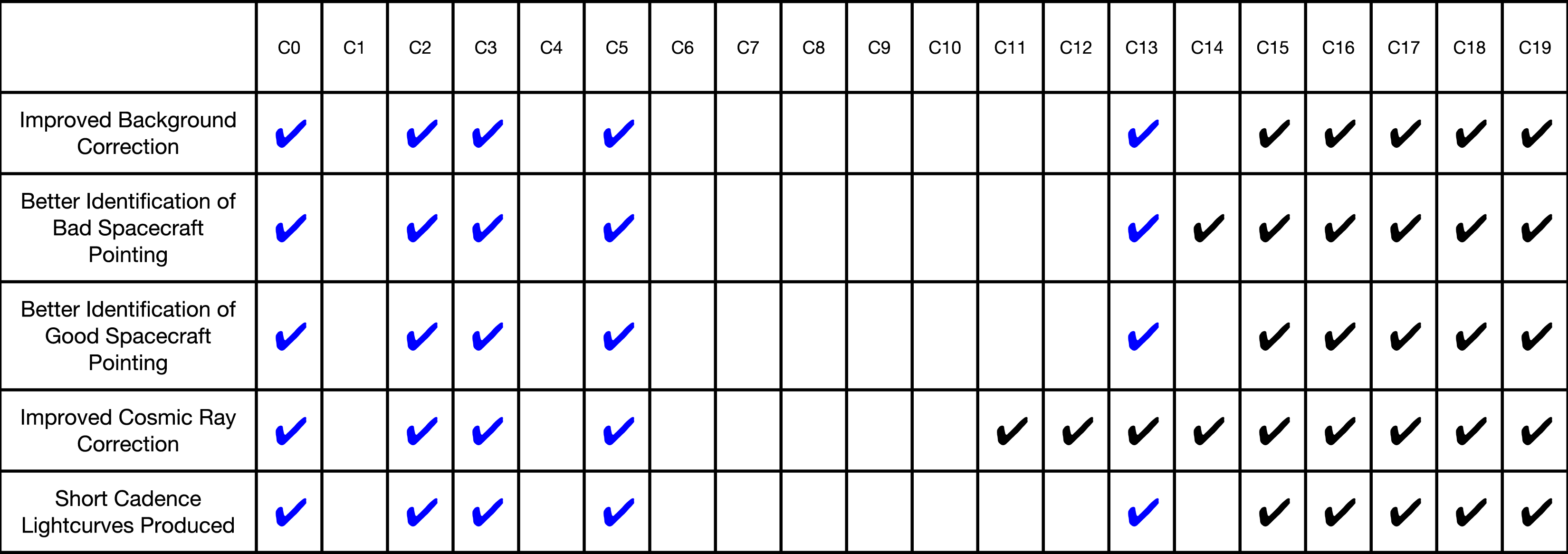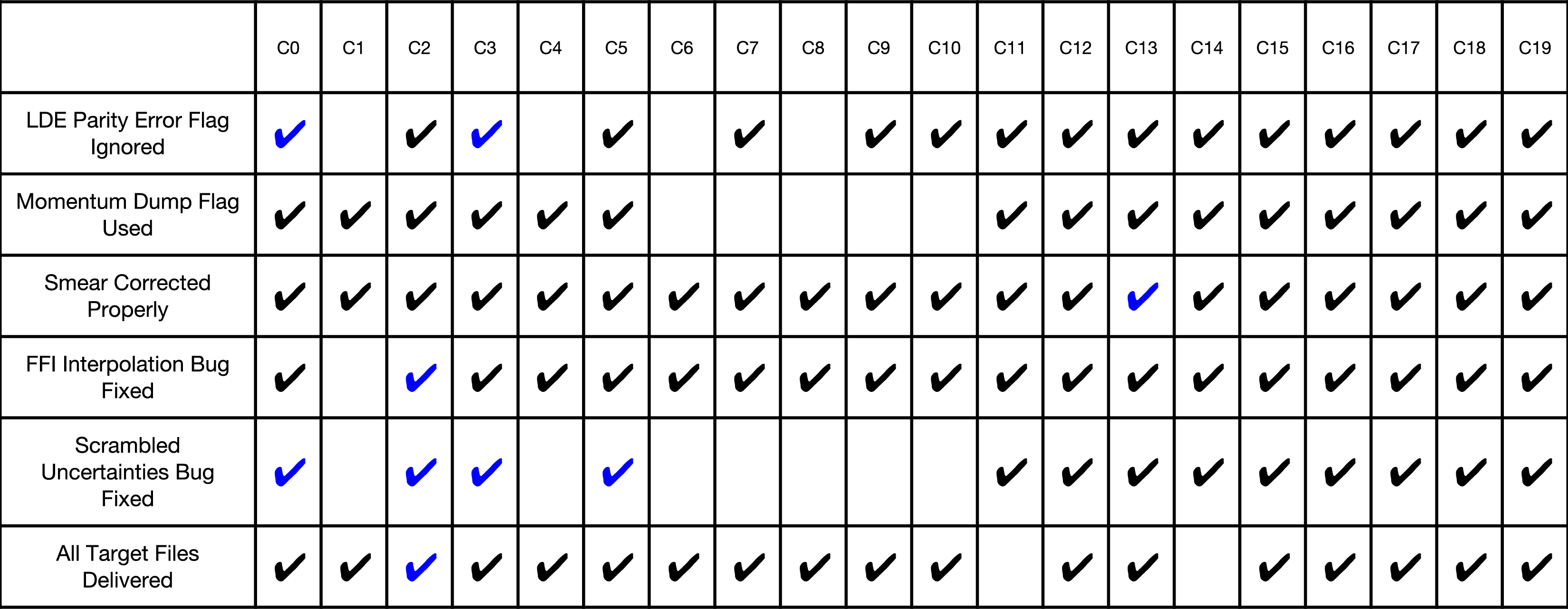Ten months ago we announced that we were undertaking an effort to reprocess campaigns 0–14 using the same version of the Kepler/K2 pipeline used for C15 and subsequent campaigns. This version introduced several new features and improvements, such as more sophisticated pixel calibration, better identification of spacecraft pointing, improved cosmic ray correction, and production of short-cadence lightcurves, along with several other minor improvements. Please see the associated news post for details on each feature.
Reprocessed data and release notes from campaign 5 are now available — 0, 2, 3, and 13 were made available over the past several months (see processing status figure below). The newest data are available via the usual K2 data download interfaces at the MAST archive; the older data has been kept available via the MAST browser interface (e.g., here for tarballs of the old target pixel files (TPFs) and here for tarballs of the old lightcurve files, if previously produced). The data release notes have been updated for each reprocessed campaign, available at the nominal K2 Data Release Notes page; links to the old version of the release notes are also provided for posterity.
As always, users are highly encouraged to read the updated C5 Data Release Notes.
The next reprocessed campaign to be delivered will be C11.
Questions/Comments? Please e-mail Jeff Coughlin.

